Individual and Team Resilience are essential cornerstones for building the change-related capacity needed to deliver on your transformation goals.
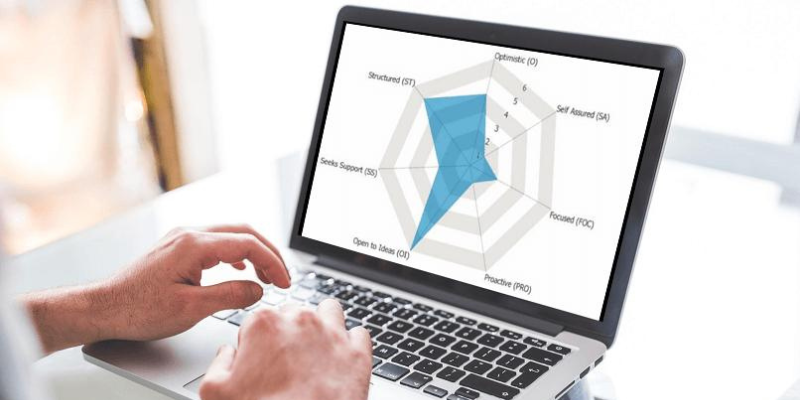
At times of major disruption, personal resilience comes into sharper focus. As it is the most resilient people inside businesses that help them bounce back and survive the turbulence in their respective marketplaces.
Our Change Demand Assessment shows people are overwhelmed
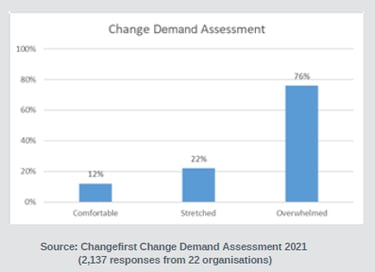 Our own data - from our Change Demand Assessment - affirms this. That people are feeling overwhelmed by change. In fact, over 70% of people responding to this Assessment tool felt their own organisation was facing too much change - and lacked the focus and bandwidth to get business-critical projects delivered in a sustainable way.
Our own data - from our Change Demand Assessment - affirms this. That people are feeling overwhelmed by change. In fact, over 70% of people responding to this Assessment tool felt their own organisation was facing too much change - and lacked the focus and bandwidth to get business-critical projects delivered in a sustainable way.
And the reality is that organisations don't change until and unless the people inside them do. Both as individuals and teams committed to working and interacting differently.
So how do you assess and build effective personal resilience? We explore this in more detail in the next section.
The importance of personal resilience right now
Our experience of working with leaders and their teams shows that resilient people gain emotional balance quickly. They adapt and cope well with the disruption normally associated with major organisational change
Whilst they are still affected by change, and not immune to the turbulence, their recovery from its effects is generally quicker. Part of what makes individuals resilient is probably innate. Research on adaptability shows that people tend towards either being optimistic (glass half-full) or pessimistic (glass half-empty).

This 'self-talk' is learned over time. And can significantly impact the way we explain, or make sense of, the effects of major organisational change. The good news is that - just as we learnt before – we can also learn again from experiences and education. To become more adaptable.
At Changefirst we have been working with people and organisations undergoing significant change since 1995. Our research and work with clients during this time has helped us to pinpoint the most important qualities that can make some people more resilient than others. Even though they are faced with the same level of disruption. And these qualities we've organised around 7 characteristics which are shown in the diagram below.
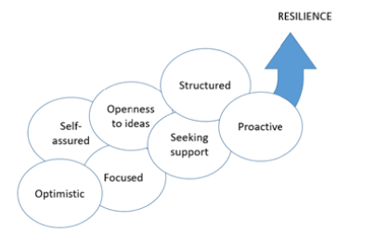
We all tend to draw heavily on some characteristics in our normal working lives. But resilient people can draw on the right characteristics for the situation.
For example, they might have an instinctive understanding of when being proactive is more important than seeking support.
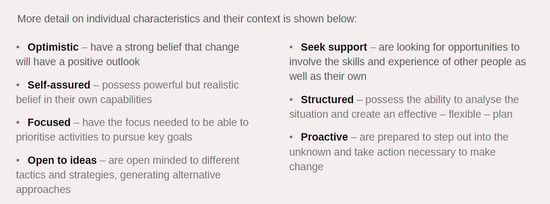
Recognising resilience in yourself and others
Changefirst’s proprietary Personal Adaptability Inventory (PAI) is used to first create a profile of an individual’s resilience against the 7 characteristics.
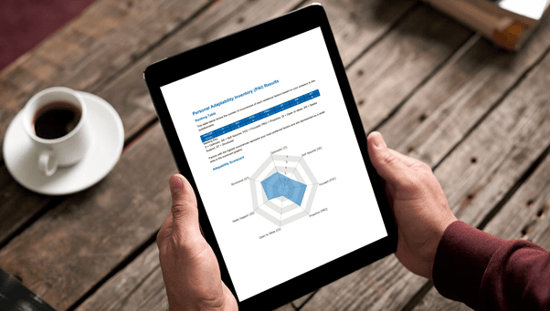
Using an ipsative question format – tied to the resilience characteristics – the PAI profile identifies areas of ‘over-use’ and ‘under-use’. And provides integrated development tactics for practical, personal action planning that can provide tangible and lasting improvements to personal resilience.
Adaptable people regain emotional balance quickly and organisations need resilient people who can:
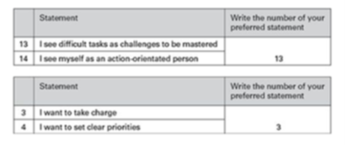
- experience less turbulence during transition
- maintain better results (productivity and quality) during change
- reach acceptance and change solutions faster
How our Personal Adaptability Inventory (PAI) and development system can help |
|
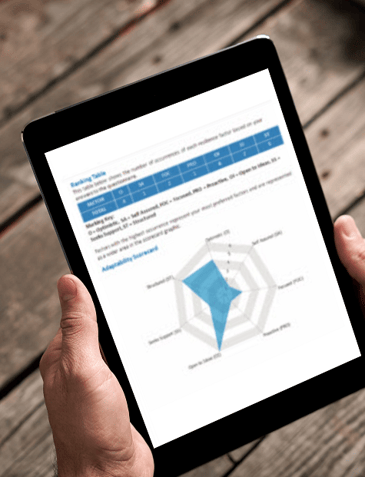
|
If you are looking to boost change capacity, with highly resilient individuals and teams, then talk to us about how our Personal Adaptability Inventory with its built-in development system can help:
All in an easy-to-use, highly cost-effective solution that is available 24/7/365. Contact us to try the PAI out for yourself and start a conversation around licensing this for your team or your organisation. |


Leave a comment